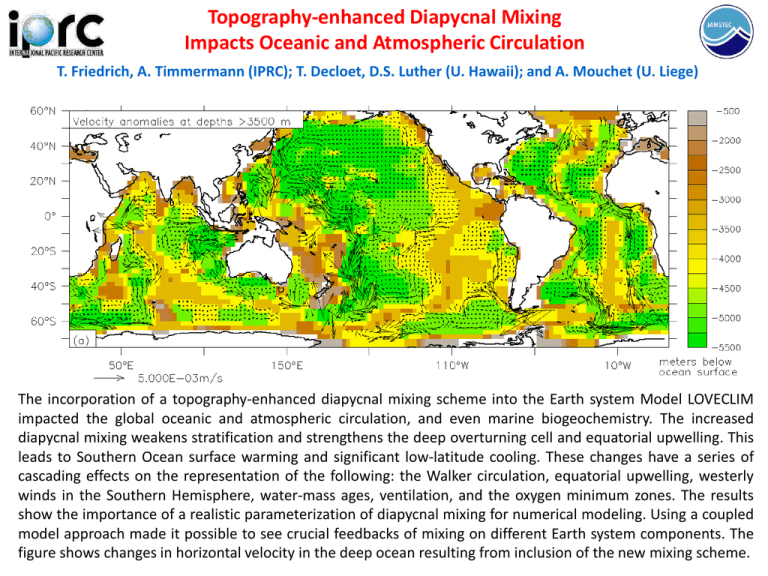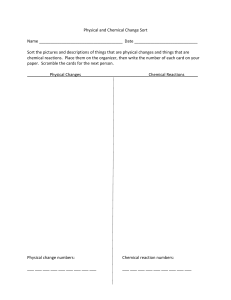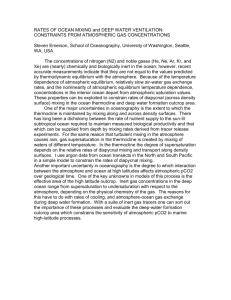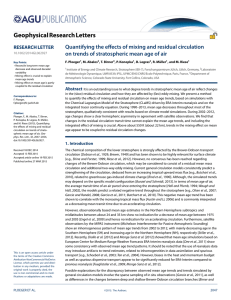Topography-enhanced Diapycnal Mixing Impacts Oceanic and Atmospheric Circulation
advertisement

Topography-enhanced Diapycnal Mixing Impacts Oceanic and Atmospheric Circulation T. Friedrich, A. Timmermann (IPRC); T. Decloet, D.S. Luther (U. Hawaii); and A. Mouchet (U. Liege) The incorporation of a topography-enhanced diapycnal mixing scheme into the Earth system Model LOVECLIM impacted the global oceanic and atmospheric circulation, and even marine biogeochemistry. The increased diapycnal mixing weakens stratification and strengthens the deep overturning cell and equatorial upwelling. This leads to Southern Ocean surface warming and significant low-latitude cooling. These changes have a series of cascading effects on the representation of the following: the Walker circulation, equatorial upwelling, westerly winds in the Southern Hemisphere, water-mass ages, ventilation, and the oxygen minimum zones. The results show the importance of a realistic parameterization of diapycnal mixing for numerical modeling. Using a coupled model approach made it possible to see crucial feedbacks of mixing on different Earth system components. The figure shows changes in horizontal velocity in the deep ocean resulting from inclusion of the new mixing scheme.




